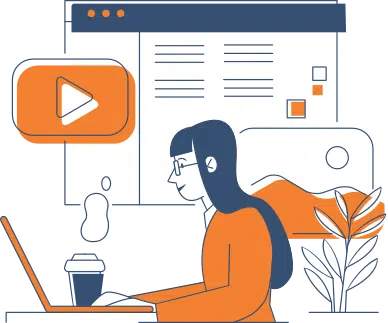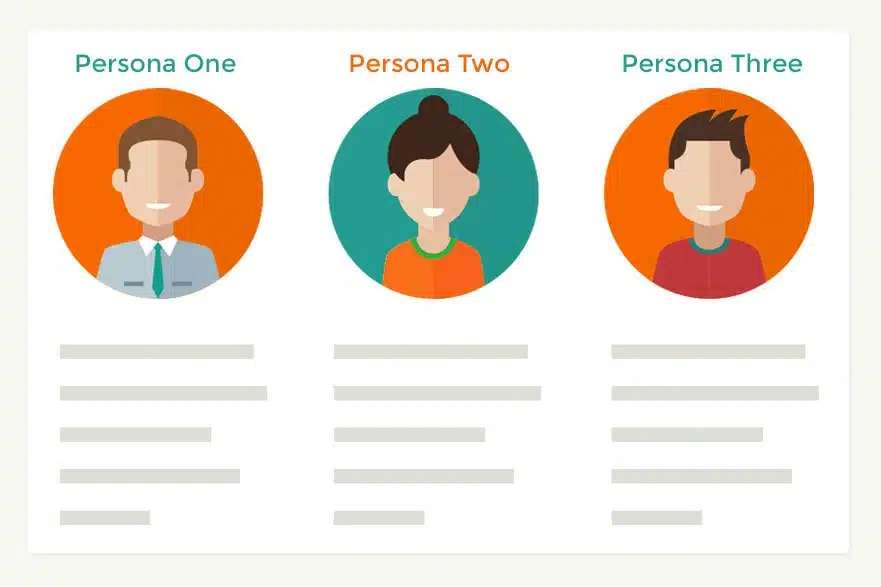


When creating persons for your business, it can be beneficial to give them an actual face.
Of the many buzzwords you may have heard in marketing this year, the term “Buyer Personas” is on the rise. What are Buyer Personas, and why are they important? Let’s look at defining this tool, where it stands in your marketing process, and where to get started creating useful, complete Buyer Personas for your business.
A Buyer Persona is a fictional representation of your customer – one of many, to be sure, but each Buyer Persona stands as an archetype that a certain set of your ideal customers will fit into.
Adele Revella – who wrote the book on the subject – defines a Buyer Persona as follows;
Built from the real words of real buyers, a buyer persona tells you what prospective customers are thinking and doing as they weigh their options to address a problem that your company resolves. Much more than a one-dimensional profile of the people you need to influence, or a map of their journey, actionable buyer personas reveal insights about your buyers’ decisions — the specific attitudes, concerns and criteria that drive prospective customers to choose you, your competitor or the status quo.
A buyer persona is not merely a description of your buyer.
Buyer personas are created with the input of your customers – they’re the synthesis of those customers’ experiences with your marketing and your product. By taking real quotes from existing users of your products – both the good and the bad – you can gain insight into how your products are seen, and begin to tailor your messages to better answering those customers’ needs earlier on.
Creating buyer personas is an important part of telling stories.
Think about how you describe your products, when asked. Do you talk about their features – the things those products do, or the amount of time your services can save a business?
How certain are you that you’re describing the right part of your product? If the customer you’re talking to is – for example – a college student, living in a tiny dorm… How important is the quality of the material going to be, compared to the price of the item?
Think about car commercials; if your customer is that college student, without a lot of possessions or things to cart around, how important is trunk size likely to be? If you’re going to talk about storage capacity, should you be pitching the vehicle to college students, or perhaps parents with larger families who have a lot of groceries to carry home in a single trip?
Knowing which stories to tell makes your products so much more appealing than trying to get anyone to invest in every little detail. It saves time, effort, and creates a sense that you know the pain your products solve for your customers.
Creating buyer personas is not difficult – but it is complex, and important.
There’s a lot of work to be done when creating these personas – but you can get started with some relatively easy steps, to think more clearly about this process before you really dig in;
- Talk to your customers. They’re your best source of information about your products – even better than your staff and yourself. Are your products and services solving the problems they expected? Are you solving problems they didn’t even know they had? This is valuable information.
- Think about solving problems, rather than offering fancy features. In most cases, people buy things – or contract for services – to solve a challenge in their lives. They want to make things easier by using your products, so help them understand how that happens.
- Make connections between these customer quotes, and the problems your services solve. This is the important part. Using these connections, you can create new messages that better address your customer’s needs – this is the real work of buyer personas.
Buyer Personas are an incredibly powerful tool for creating marketing materials – especially when considering content marketing or inbound marketing as methodologies. They can become amazingly detailed, and only get better as they do.
We encourage you to start creating some buyer personas for your business – and please, feel free to share your success in the comments as well!
Source: Hello BLOG
Recent Articles
Write For Us
Think you’ve got a fresh perspective that will challenge our readers to become better marketers? We’re always looking for authors who can deliver quality articles and blog posts. Hundreds of your peers will read your work, and you will level up in the process.Ready to grow? Say Hello







